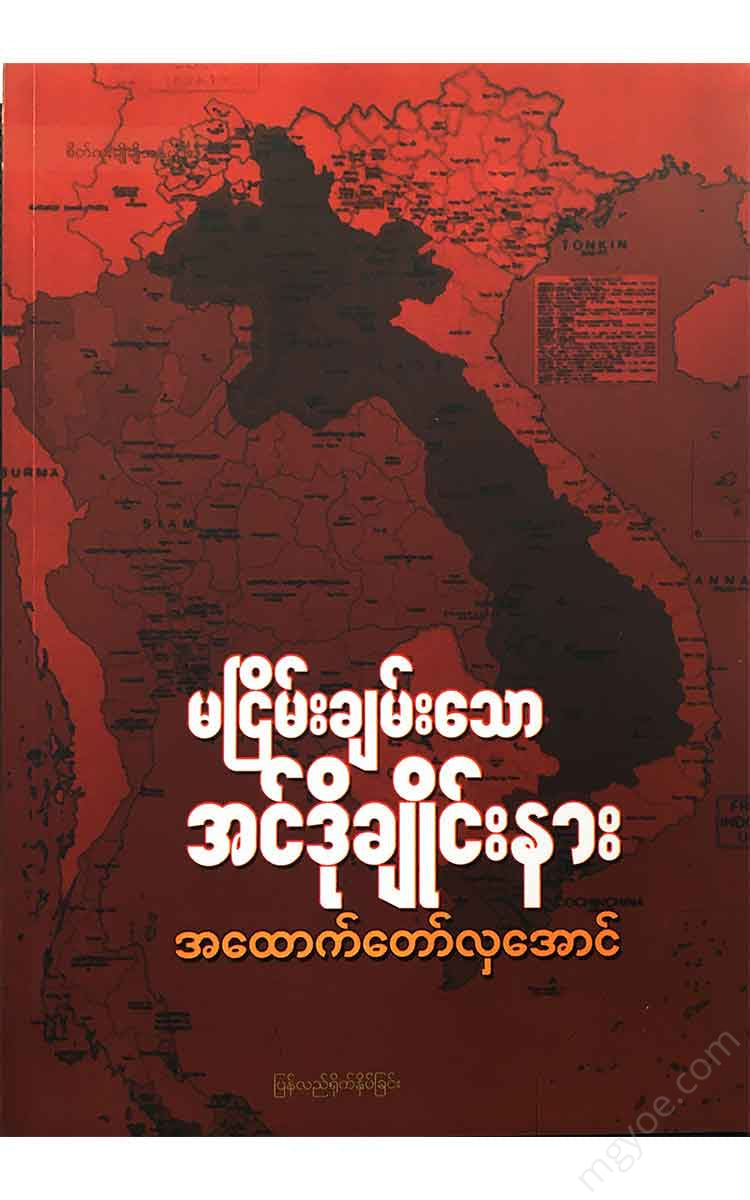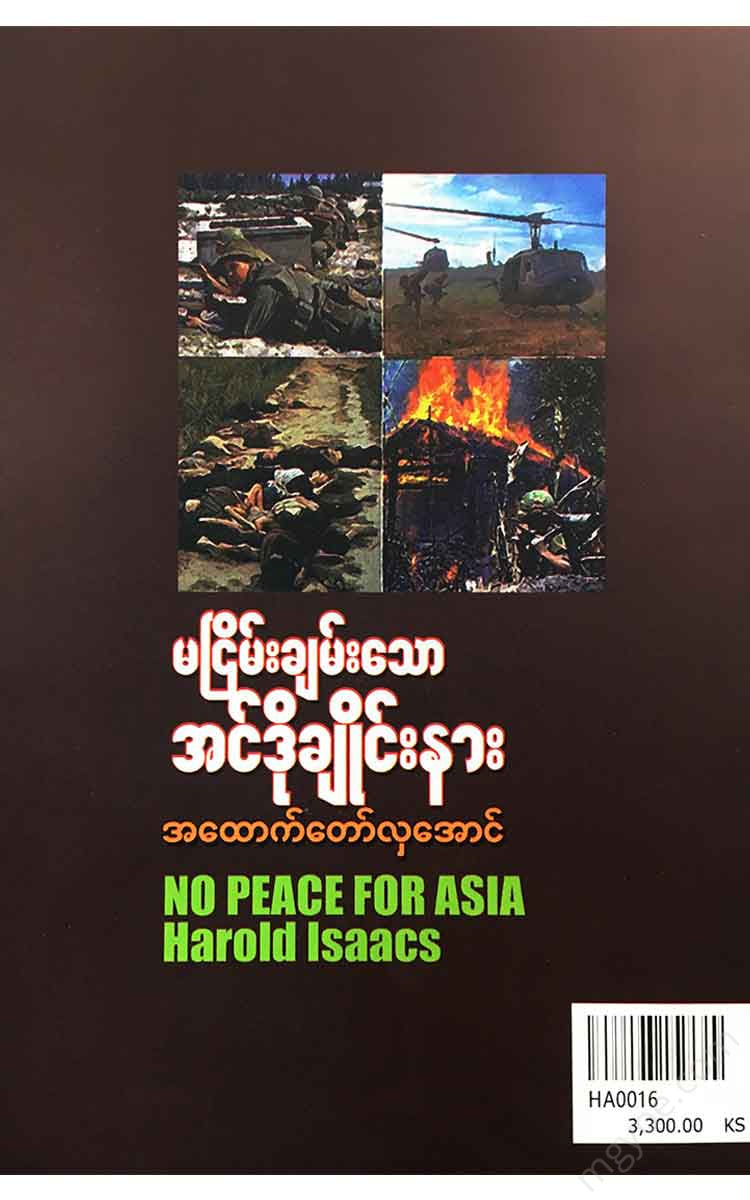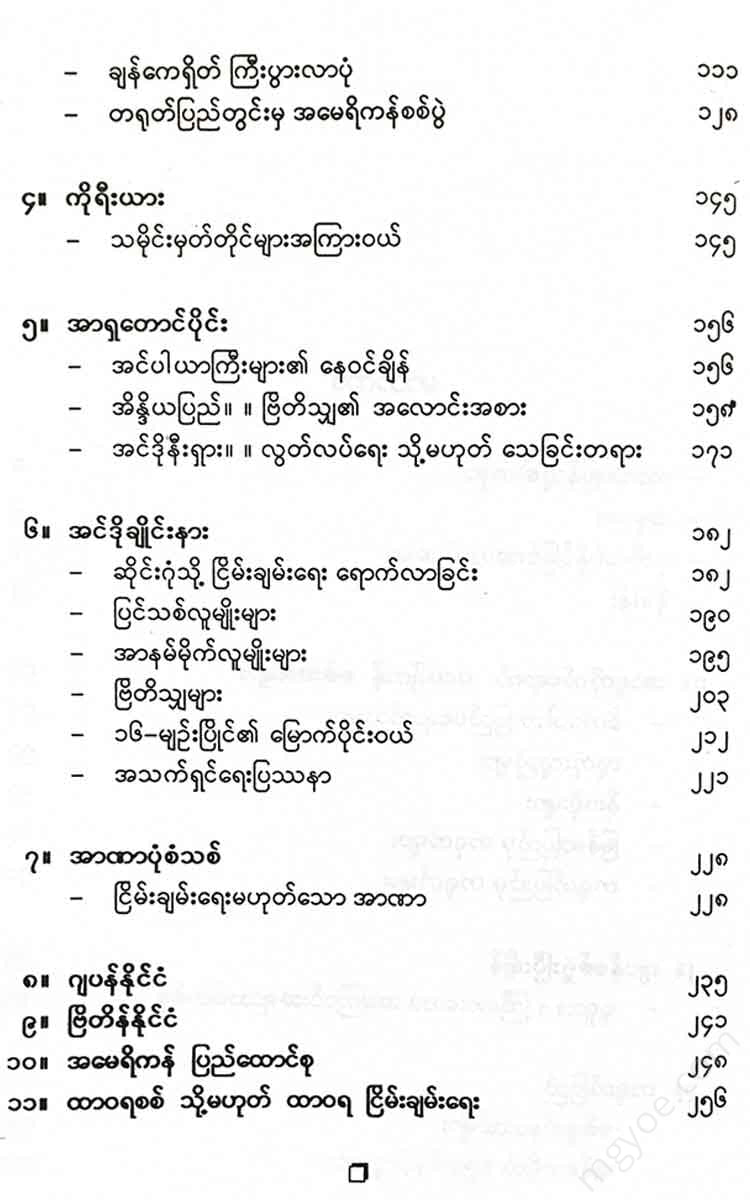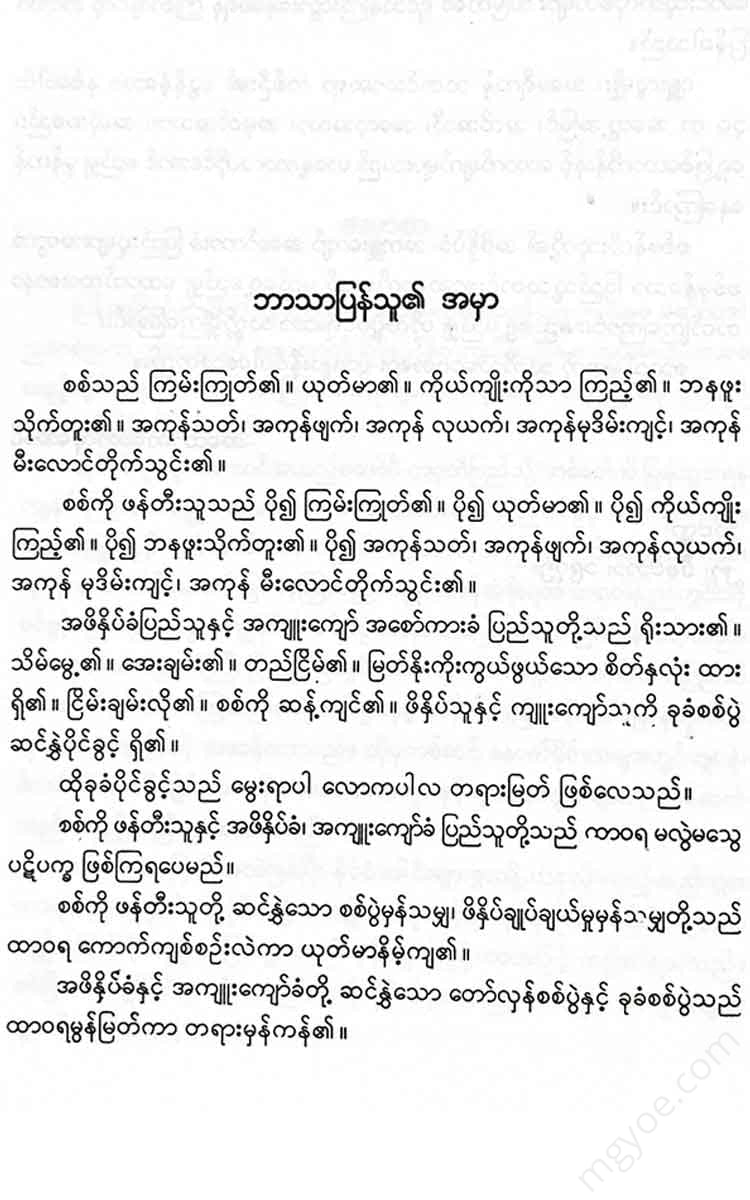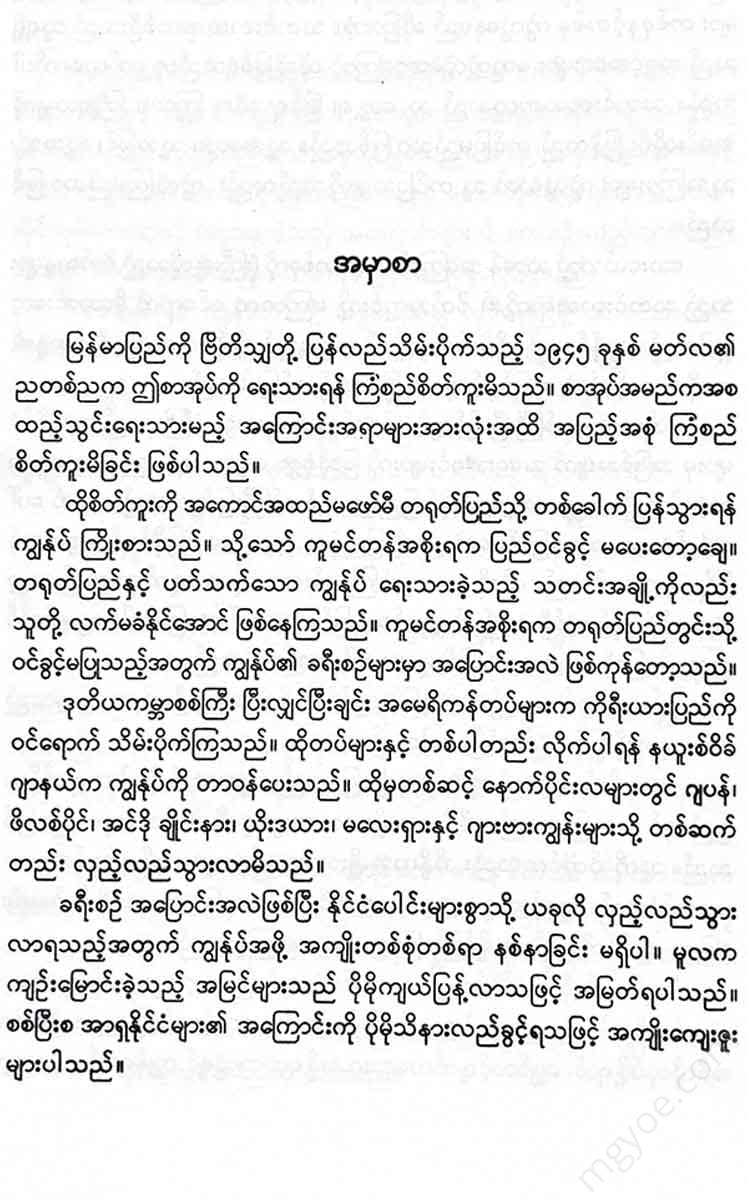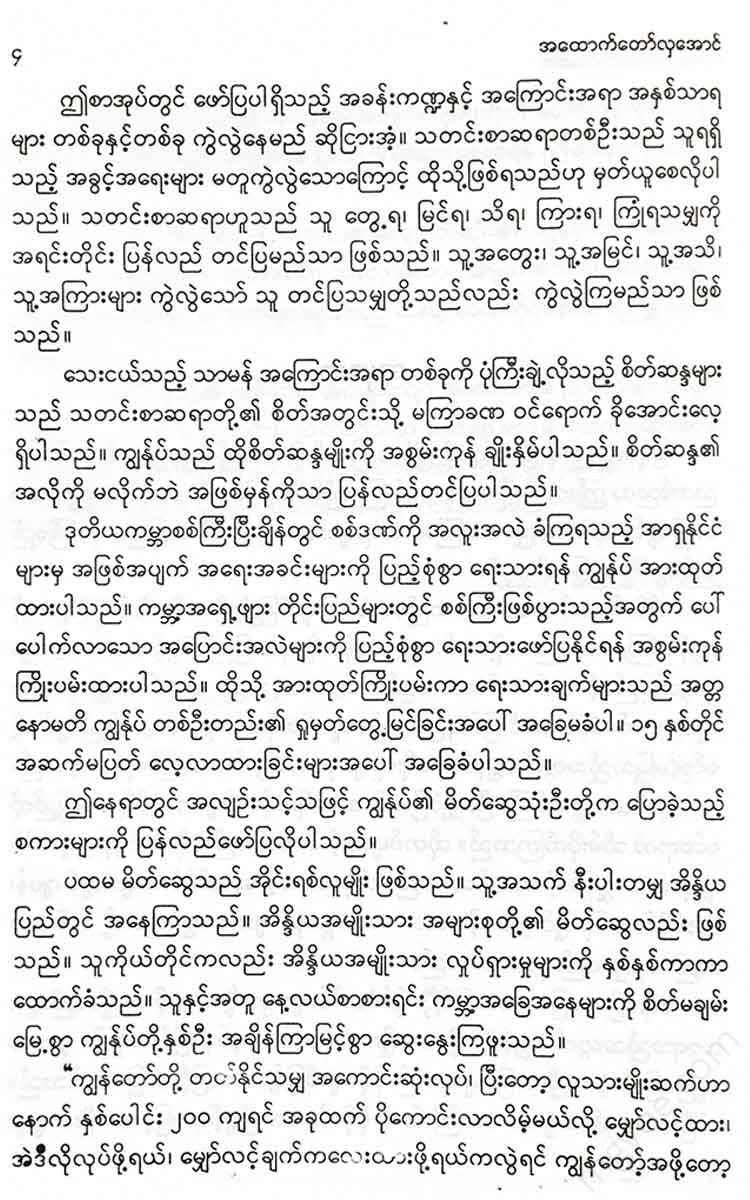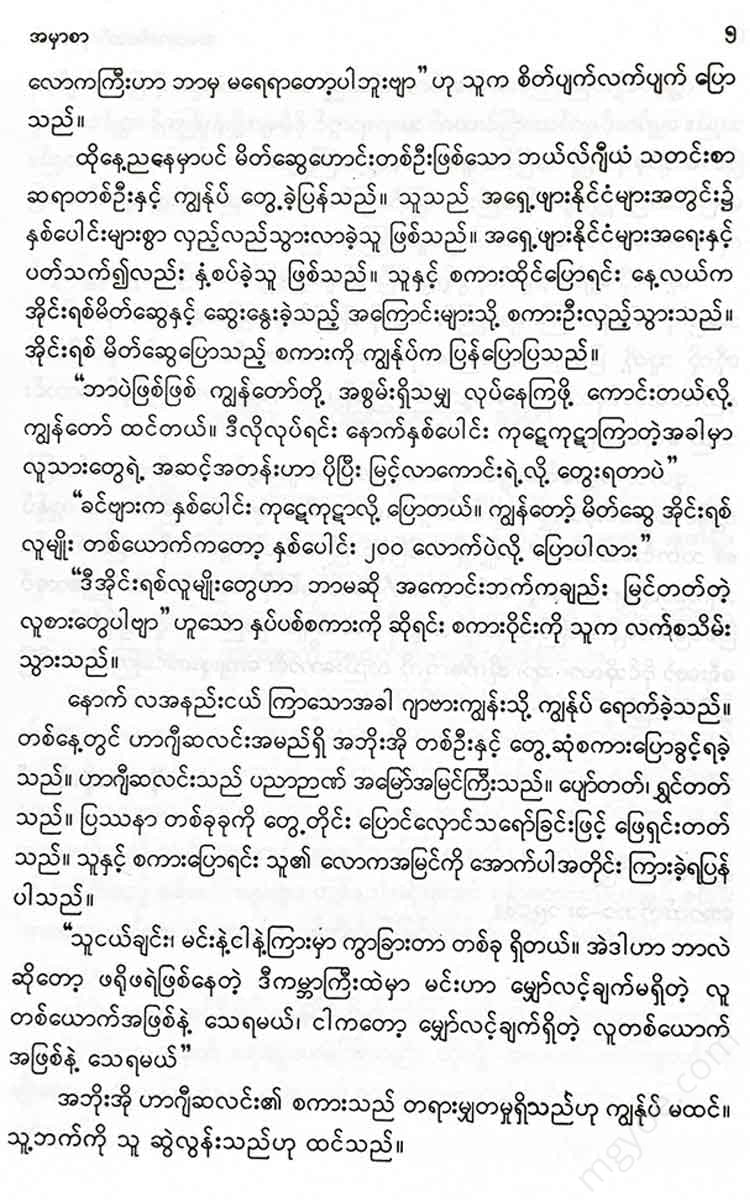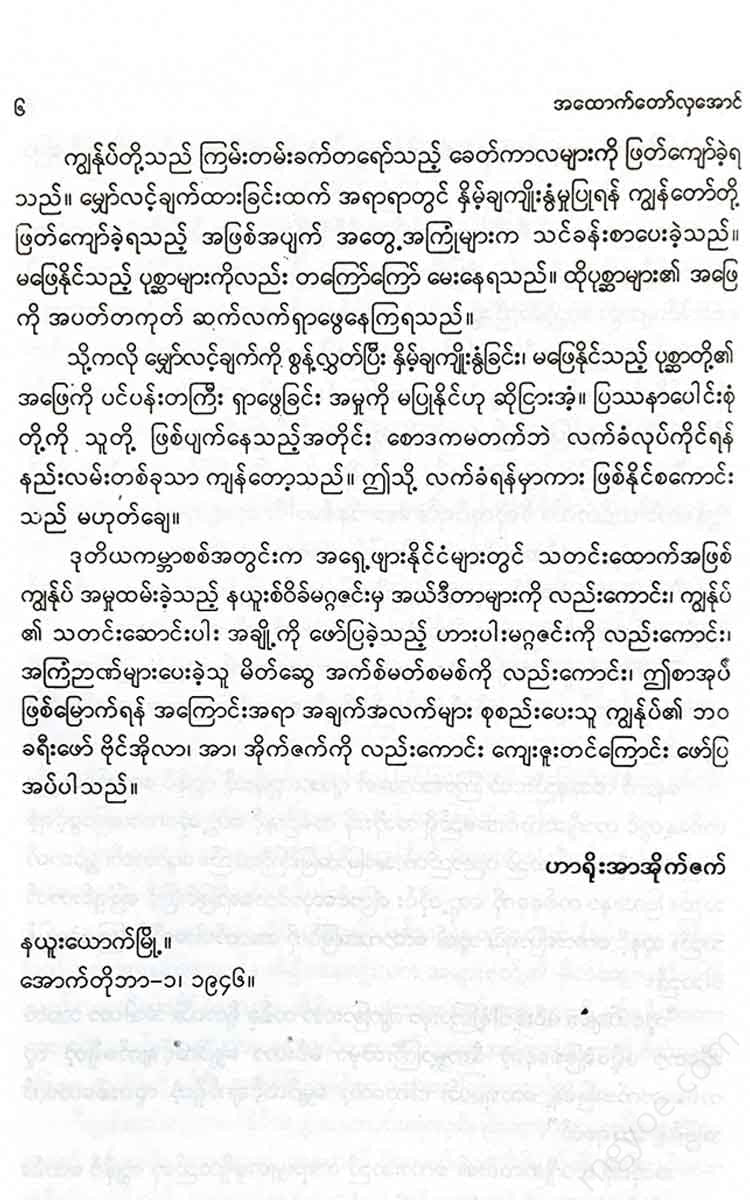စိတ်ကူးချိုချိုစာပေ
အထောက်တော်လှအောင် - မငြိမ်းချမ်းသော အင်ဒိုချိုင်းနား
အထောက်တော်လှအောင် - မငြိမ်းချမ်းသော အင်ဒိုချိုင်းနား
Couldn't load pickup availability
Introduction
There is no peace in Asia. Since the defeat of Japan, the sound of gunfire has echoed from one end of the globe to the other. In every country, political and social problems, differences, outbursts of anger, dissatisfaction, and unfulfilled desires are intertwined. Civil war in China, national wars in Indochina and Indonesia, riots and rebellions in India, and political conflicts in Korea and the Philippines are constantly erupting. Famines, political chaos, and economic collapse are occurring in various parts of the world.
It is easy to say that such conditions were inevitably brought about by the great Pacific War. But there are more important reasons than the Pacific War. War is only one terrible tragedy. Only a tragedy that erupts through continuous conflicts.
There can be no peace in Asia. Because the evil of war cannot solve anything. In the meantime, Japan has launched a war to conquer the entire Asian continent.
Millions of people have fought for political freedom before, and they will continue to fight for it now.
Millions of people have struggled in the past to escape from backwardness, underdevelopment, and hunger. They will continue to struggle now.
The Pacific War, like a world war, has caused the loss of countless lives. It has destroyed farms, homes, and wealth. Apart from such losses, no progress or innovation has been achieved for humanity. Millions of people have died in vain, and those who have survived are still searching for ways to survive and build a prosperous society. This is what we see when we look at the current world picture.
Asia is like a half of the world. This half of the world is of great importance to all Americans. Most Americans have failed to understand this importance.
It was only in the past few years that some Americans realized that the unresolved problems of the Chinese peasants and the Malay coolies were the same problems that had caused so many American soldiers to die in the harsh conditions of Asia.
Because of these problems, American soldiers from many states in the United States came to the battlefields in Asia. They came to the Pacific battlefield. And they came for no other reason than to die. And they did die.
These events did not begin with the Japanese attack on Pearl Harbor. Nor did they begin with the Japanese signing of the surrender aboard the USS Missouri. Nor does it need to be questioned whether they began with the Japanese treacherous invasion of the United States.
The spark that started about 150 years ago. In other words, the problems that started with the greed of Western countries for the rich resources of Asia.
If we are to dig up the source, we will have to revisit the ugly and murky history of the past. We will have to reexamine the reasons for the desire to expand the empire and the desire to own slaves.
We will be able to rediscover the stories of powerful nations competing for territory and slaves. We will be able to recall the stories of enslaved and oppressed people who fought for freedom from slavery and the right to create their own destiny.
The disasters that the great powers had sown decades ago are only now exploding. Therefore, these disasters have nothing to do with Japan's initiation of the war, nor with Japan's surrender.
The United States has also been partly involved in these historical events. The United States must also share the responsibility for the consequences that will arise from them. These events, which have been like a sectarian war, have been going on for too long. They have not ended to this day. The end of the journey we are on has not yet been reached.
This problem is very large and complex. Therefore, it will not be easily solved. It is true that the events are complex, but in essence it is not too complex.
There are billions of people living in Asia. The land they live on is rich in natural resources. Despite living on such rich natural resources, they are extremely poor. They are extremely backward.
For centuries, the West has been devouring Asia, exploiting its cheap labor. Even now, Japan is trying to monopolize the labor of Asian countries, eating their fat and flesh. The great powers have not yet had the opportunity to do so, but they have been waiting for the opportunity to intervene if necessary.
Those who want to suck blood have fought many wars with Asians on Asian soil. Those who want to suck blood have also fought many wars with each other on this very land. The powerful countries have constantly competed for access to the resources of Asia and to expand their markets.
Various nations came in groups and fought for their interests. Their fierce rivalry grew more intense.
Eventually, they could no longer compete through trade, and instead took up arms and fought each other. Such wars were even waged on Asian soil.
Due to such competitive struggles, market competition, and greed, the people of Asia have been unable to escape from their misfortunes, bad lives, and bad fates. The nationalistic spirit that had taken root and flourished in their hearts has also been crushed to pieces.
Therefore, they will never be able to compete shoulder to shoulder with the people of the world in terms of economy. They will be stuck in their ancient traditions and outdated social lives.
The potential of the Asian peoples was also used by the imperialist powers as a tool for their own purposes, either to be exploited for their own benefit or as a weapon for their own ends.
Thus, while Asia may be rich, it is not rich for the people of Asia. Those who want to exploit, those who want to suck blood, and those who want to increase their power cannot escape from the warring states.
For hundreds of years, wars have taken many forms. Wars between empires, wars between empires and colonized peoples, wars between local peoples, and so on. Many wars have been fought over markets, politics, and power. Finally, a major war like the World War I of 1940-45 was waged on Asian soil.
As a result, there can be no peace in Asia. The end of one bloody war is only a welcome prospect for another bloody war. Even though one war is over, there is no hope for a better future.
Northern Asia has shifted from being a region of rivalry between the United States and Japan to one of rivalry between the United States and Russia.
The countries of South Asia were also reclaimed as colonies by Britain and other great powers. Similarly, the Asian countries, the backward African countries, and the small European countries that were weak were becoming hostages to the power struggles of the world's great powers. For them, peace was no longer a good prospect. They were heading towards perpetual war.
The situation in Asia after the war with Japan was the same. Therefore, this book focuses on those issues.
Eternal war is not inevitable. The wars that have taken place across Asia have not been based solely on the pursuit of power and the desire to exploit. I have learned that there are more than that.
The oppressed people are animated by the hope that something will change. They want to abandon the ruins. They want to escape from a life of toil. They want to build new forms on new foundations. Little by little, this hope grows.
Throughout human history, there are many examples of great hope that has given rise to great creativity. But it has only grown in the face of the obstacles of barbarism. If only those obstacles could have been overcome, then major milestones in human history could have been built. Powerful marks could have been made. The future American people will also be involved in these major milestones.
As long as the social, political, and economic problems in Asia remain unresolved, the Asian continent will remain a land of conflict. If such conflicts continue, there will be no peace in Asia. If there is no peace in Asia, there will be no peace in the United States. Moreover, there will be no peace in the entire world.
We need to consider the question of what kind of world we still have time to build.
Can we unite all the countries, all the races, all the cultures, all the resources, all the needs of humanity, into one group? If we can unite, how can we unite? If we can't unite, how can we do it?
